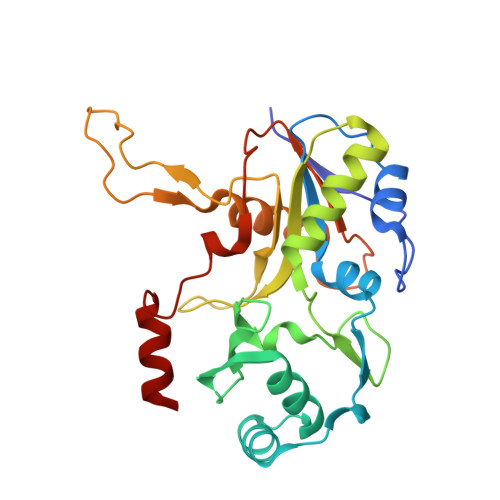Poly-gamma-glutamylation of biomolecules.
Bashiri, G., Bulloch, E.M.M., Bramley, W.R., Davidson, M., Stuteley, S.M., Young, P.G., Harris, P.W.R., Naqvi, M.S.H., Middleditch, M.J., Schmitz, M., Chang, W.C., Baker, E.N., Squire, C.J.(2024) Nat Commun 15: 1310-1310
- PubMed: 38346985
- DOI: https://doi.org/10.1038/s41467-024-45632-1
- Primary Citation of Related Structures:
7ULD, 7ULE, 7ULF, 8G8P - PubMed Abstract:
Poly-γ-glutamate tails are a distinctive feature of archaeal, bacterial, and eukaryotic cofactors, including the folates and F 420 . Despite decades of research, key mechanistic questions remain as to how enzymes successively add glutamates to poly-γ-glutamate chains while maintaining cofactor specificity. Here, we show how poly-γ-glutamylation of folate and F 420 by folylpolyglutamate synthases and γ-glutamyl ligases, non-homologous enzymes, occurs via processive addition of L-glutamate onto growing γ-glutamyl chain termini. We further reveal structural snapshots of the archaeal γ-glutamyl ligase (CofE) in action, crucially including a bulged-chain product that shows how the cofactor is retained while successive glutamates are added to the chain terminus. This bulging substrate model of processive poly-γ-glutamylation by terminal extension is arguably ubiquitous in such biopolymerisation reactions, including addition to folates, and demonstrates convergent evolution in diverse species from archaea to humans.
Organizational Affiliation:
School of Biological Sciences, The University of Auckland, Private Bag 92019, Auckland, 1142, New Zealand. [email protected].


















